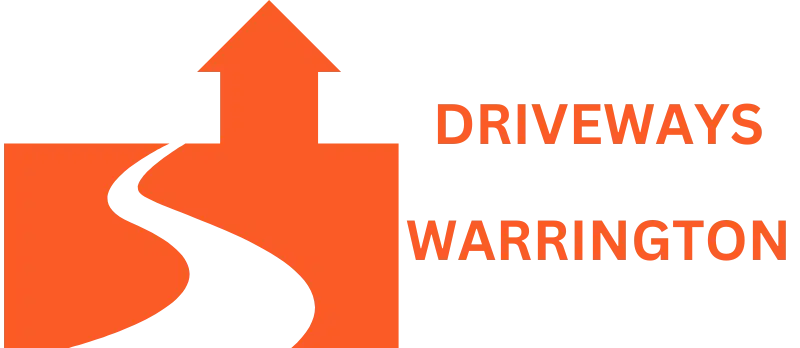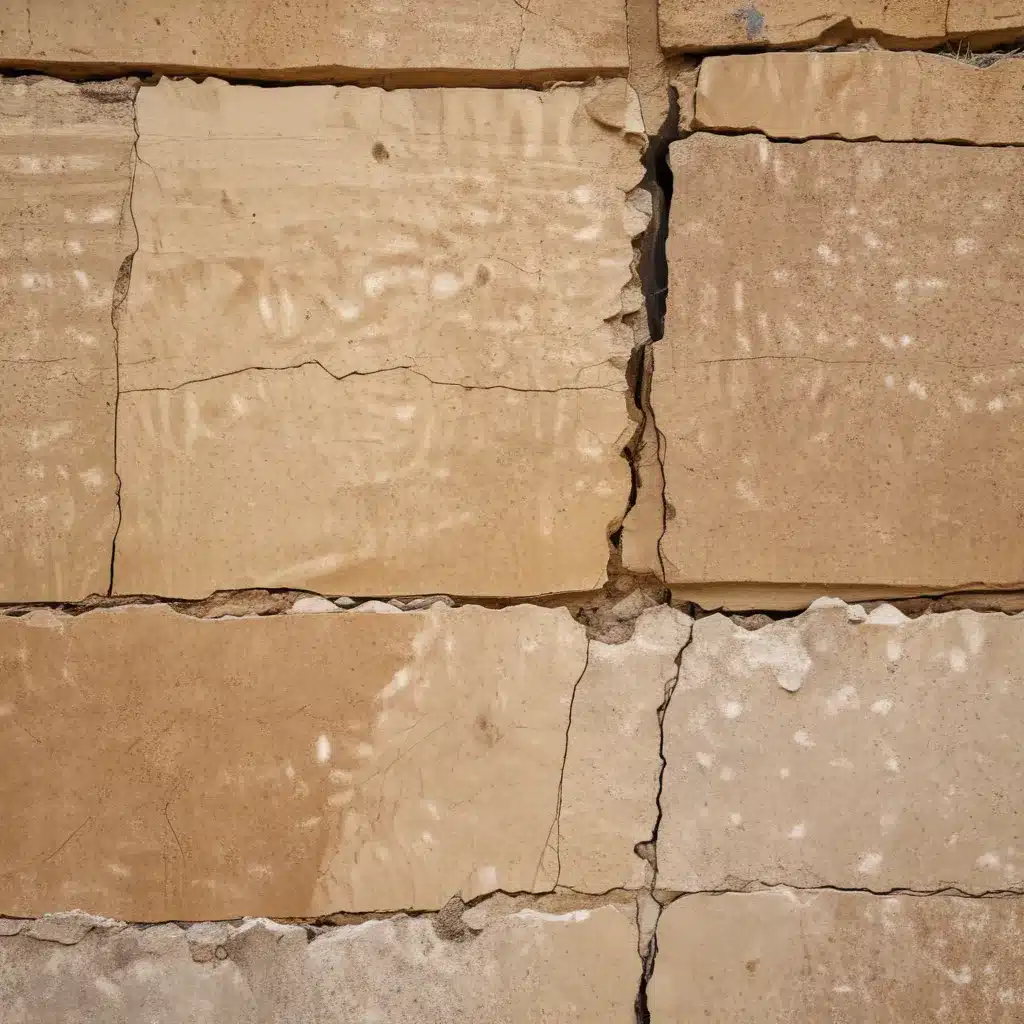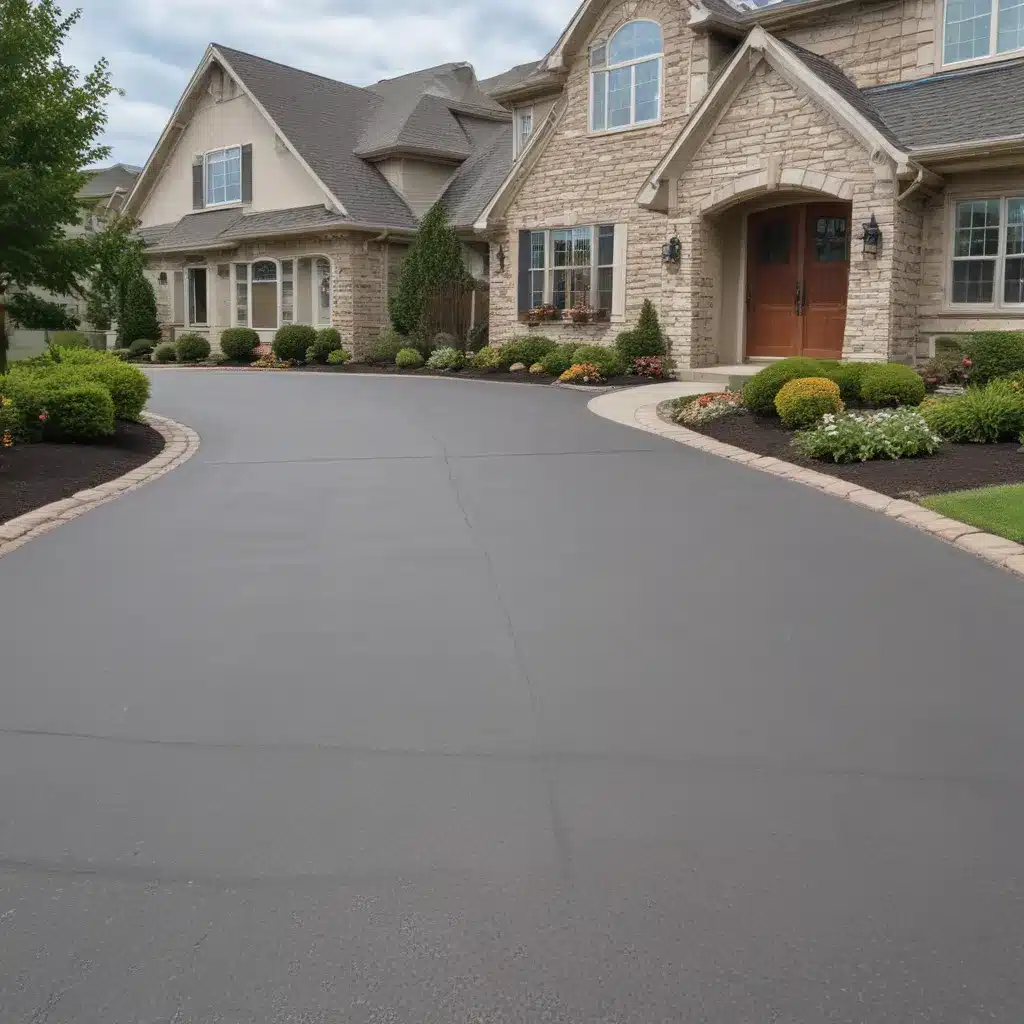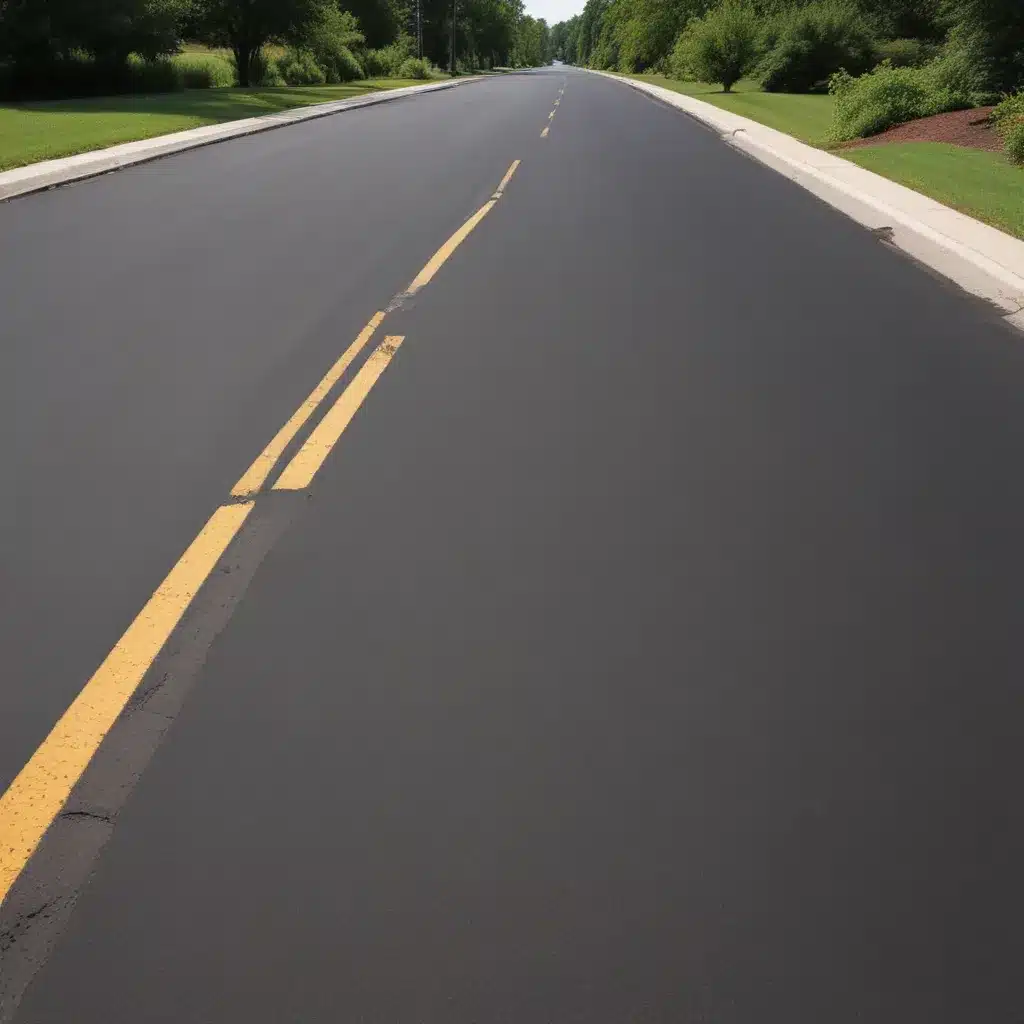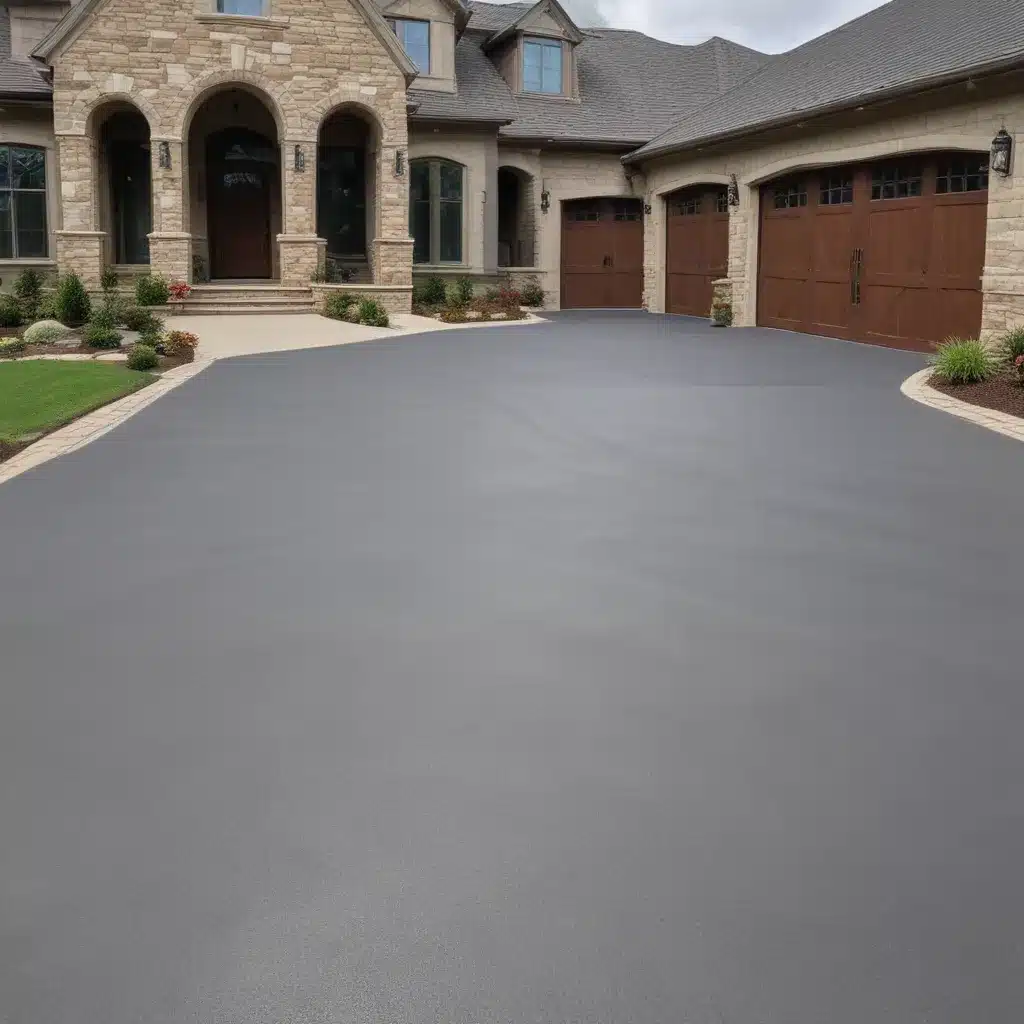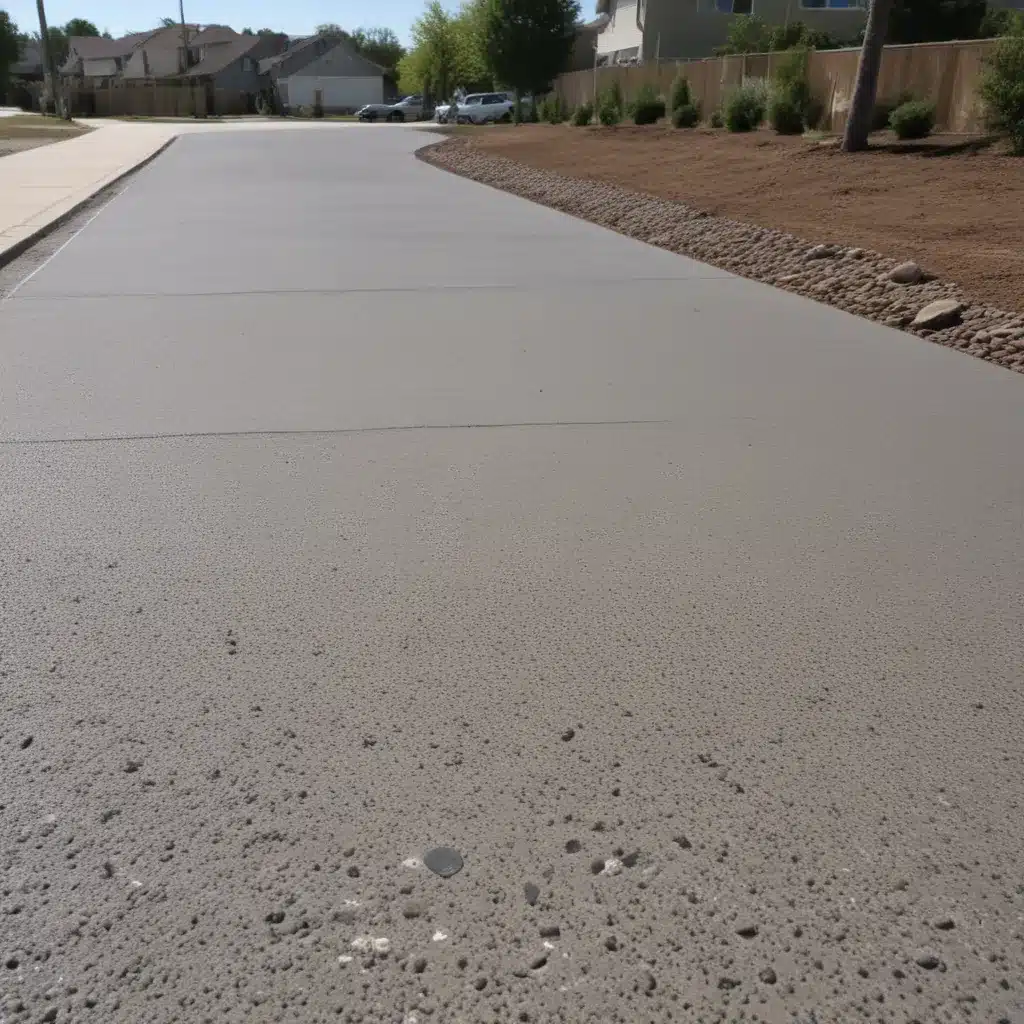Driveway Dramas: Unraveling the Mystery of Settling Concrete
Ah, the joys of homeownership – the pride, the sense of accomplishment, the…cracks in the driveway? Wait, what? Yup, it’s a common issue that can strike fear into the hearts of even the most seasoned property owners. But fear not, my fellow concrete aficionados, for I am here to guide you through the murky waters of driveway settlement and share my hard-earned wisdom on how to tackle these pesky problems head-on.
You see, I’ve been there, done that, and collected the T-shirts (and a few parking tickets) when it comes to dealing with driveway woes. From the early days of moving into my humble abode, when I thought a few strategically placed flower pots would mask the growing cracks, to the realization that those little fissures were the harbingers of a much bigger issue, I’ve been on quite the journey.
But you know what they say, “A problem shared is a problem halved,” and that’s exactly what I’m here to do. So, buckle up, grab a cup of coffee (or a cold one, depending on the severity of your driveway drama), and let’s dive deep into the fascinating world of concrete settlement and how to conquer it, once and for all.
Decoding Driveway Depressions: Understanding the Causes of Settling Concrete
Alright, let’s start with the basics: why does concrete settle in the first place? Well, my friends, it all comes down to the ground beneath your driveway. You see, the soil under your concrete slab can be a fickle thing, and if it’s not properly prepared and compacted, it can lead to some seriously funky business.
Imagine a sponge, soaked to the brim with water – that’s kind of how the soil under your driveway behaves. When it gets wet (hello, British weather), the soil can expand and become oversaturated, causing the ground to shift and the concrete to settle unevenly. And let’s not forget about good old Mother Nature, who loves to throw a curveball our way in the form of tree roots and eroding soil.
But the drama doesn’t stop there, oh no. Improper installation can also be a culprit, as can poor drainage systems and (gasp) even heavy vehicles parking on the driveway for extended periods. It’s like a perfect storm of concrete-cracking chaos, and we’re just getting started!
Spotting the Signs: Recognizing Driveway Settlement Issues
Now that we’ve uncovered the potential causes of driveway settlement, it’s time to learn how to spot the telltale signs. And trust me, these cracks and depressions aren’t exactly shy about making their presence known.
First and foremost, keep an eye out for those tell-tale cracks creeping across your driveway. They can start small, but trust me, they’ll only get worse over time. And it’s not just the cracks you need to watch out for – uneven surfaces, sunken areas, and even puddles of water can all be signs that your driveway is slowly but surely settling into oblivion.
But wait, there’s more! If you start to notice your garage door or gate having trouble closing properly, or if your car starts to feel like it’s navigating a minefield every time you pull in, those could be additional clues that your driveway is in need of some serious TLC.
And let’s not forget about the good old “visual test” – simply take a stroll around your driveway and keep your eyes peeled for any irregularities. Trust me, once you start looking, you’ll be amazed at how many subtle signs of settlement you can spot.
Tackling the Cracks: Repairing Driveway Settlement Issues
Alright, you’ve identified the problem, now it’s time to put on your problem-solving hat and figure out how to fix these pesky driveway settlement issues. Fear not, my friends, for I have a few tricks up my sleeve that are sure to have your concrete back in tip-top shape in no time.
First and foremost, it’s important to address the root cause of the problem. If the underlying soil is the culprit, you may need to consider re-leveling and compacting the ground before attempting any repairs. This could involve bringing in heavy machinery, excavating the area, and ensuring that the soil is properly prepared to support the weight of your driveway.
But fear not, there are also some more DIY-friendly options available. For smaller cracks and depressions, you can try your hand at concrete patching and resurfacing. This involves carefully cleaning the affected areas, filling in the cracks with a specially formulated concrete mixture, and then smoothing out the surface to create a seamless, uniform look.
And if you’re really feeling like a concrete Picasso, you can even consider more advanced techniques, such as mudjacking or slabjacking. These methods involve injecting a special cement-based slurry underneath the sunken concrete, effectively “lifting” the slab back into its proper position. It’s like a mini-facelift for your driveway, and the results can be truly impressive.
Maintaining the Masterpiece: Preventing Future Driveway Settlement
Alright, you’ve conquered the cracks, patched the potholes, and restored your driveway to its former glory. But the real challenge lies in keeping it that way. After all, we don’t want to find ourselves back in the same predicament a few years down the road, now do we?
That’s where a little bit of proactive maintenance comes into play. Regular cleaning and sealing can go a long way in protecting your driveway from the elements and keeping those pesky cracks at bay. And let’s not forget about the importance of proper drainage – making sure your gutters and downspouts are directing water away from the driveway can be a game-changer in the fight against settlement.
And speaking of water, it’s also crucial to keep an eye on your sprinkler system and any landscaping features that might be contributing to excess moisture around the driveway. Trust me, a little bit of water can go a long way in causing some serious concrete chaos.
But the true secret to driveway longevity? Regular inspections and maintenance. By taking the time to regularly walk the length of your driveway and address any issues as they arise, you can nip those settlement problems in the bud before they have a chance to take root. It’s like a never-ending game of concrete whack-a-mole, but trust me, it’s well worth the effort.
Conquer the Cracks: A Driveway Triumph
And there you have it, my fellow driveway enthusiasts – the ultimate guide to identifying, repairing, and preventing driveway settlement issues. From the underlying causes to the telltale signs, and from the DIY fixes to the professional-grade solutions, I’ve covered it all.
So, the next time you spot a crack in your driveway, don’t despair – embrace it as an opportunity to showcase your problem-solving prowess. With a little bit of elbow grease, a healthy dose of determination, and maybe a few choice words directed at the ever-shifting soil beneath your feet, you can conquer those concrete cracks and reclaim your driveway with pride.
Remember, a well-maintained driveway isn’t just a practical necessity – it’s a reflection of your commitment to your home and your community. So, let’s raise a glass (or a trowel) to the art of driveway maintenance and the joy of a smooth, crack-free surface beneath our wheels. Cheers, my friends, and happy driveway adventures!
Oh, and one more thing – if you’re in the Warrington area and in need of some professional driveway services, be sure to check out https://www.driveways-warrington.co.uk/. These folks know a thing or two about conquering concrete cracks and keeping your driveway looking its best.
